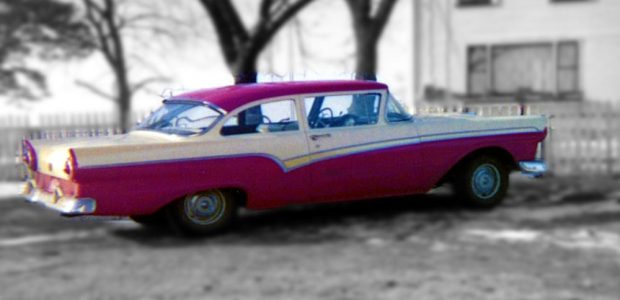Architect Frank Lloyd Wright called this home “his little gem” and selected it for a book of his 38 most significant buildings. It’s not grand like many of his works – the modest, one-story home is 2,600 square feet. Yet the Kenneth and Phyllis Laurent House is unique among the 400 Wright-designed buildings still standing – it’s the only home the architect created for a person with physical disabilities.

In 1946, Kenneth Laurent became wheelchair bound as the result of complications from spinal surgery. He and his wife wanted a home that would accommodate his needs. After seeing an article in House Beautiful magazine about Frank Lloyd Wright and a house that he had designed with an open floor plan, they decided to contact the architect. After lengthy correspondence with Wright, plans were drawn up for a house, and it was completed in 1952.
In making the house handicap accessible, Wright was decades ahead of the ADA. He created the open floor plan the Laurents had wanted so Kenneth could move and turn around easily in each room. The bathroom was larger than usual. Door knobs and light switches were installed at wheelchair level. Cabinets were built with fold-down doors rather than pull-out drawers. And seating throughout the home was lowered so guests sat at eye level with Kenneth. (He did not have to feel like others were looking down at him, something people in wheelchairs often experience.) Kenneth later remarked that the house made him “realize his capabilities, not his disabilities.”
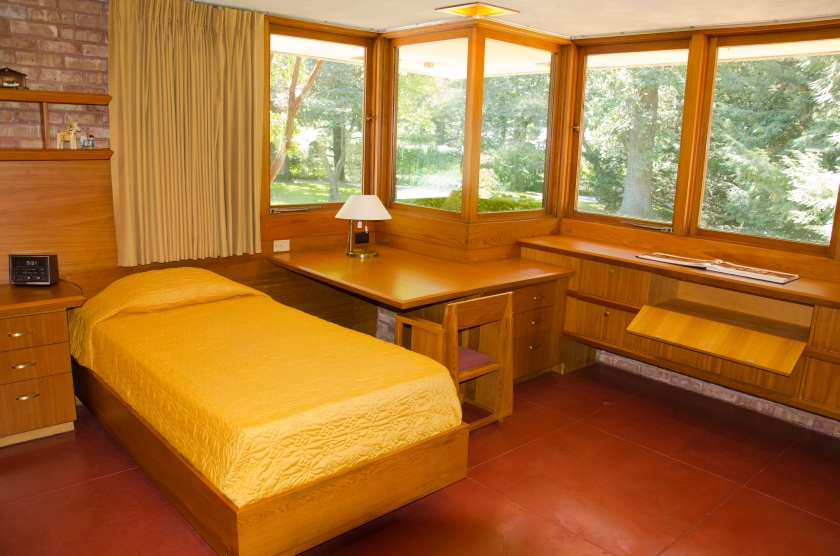


The house also contains the noted red tile. This ceramic square was a combination stamp of approval and mark of authenticity that Wright had installed on buildings he deemed worthy.
Wright always wanted to do a complete package for his clients – not only designing the house, but also the furniture, plus choosing colors and decorative elements, and even deciding the dishes in the kitchen. For their part, Kenneth and Phyllis Laurent totally embraced the Frank Lloyd Wright concept. Their home remained a model of Wright’s style throughout their decades of ownership. During our tour, we learned that daughter, Jean, wasn’t even allowed to put posters on her bedroom walls when she was a teenager.
The Laurents and Wright enjoyed a lasting friendship. Each year Kenneth and Phyllis were invited to Taliesin for Wright’s birthday celebration, and they were also on the guest list for Wright’s funeral services when the architect passed away in 1959.
The Laurents sold their home to a foundation in 2012. After restoration, it was opened for tours in 2014. The house is truly “a little gem.” When I entered the living room, I was taken by how elegant yet comfortable and inviting everything looked. Cypress paneling throughout added a warm glow. The windows allowed for great views of the grounds and plenty of light inside.
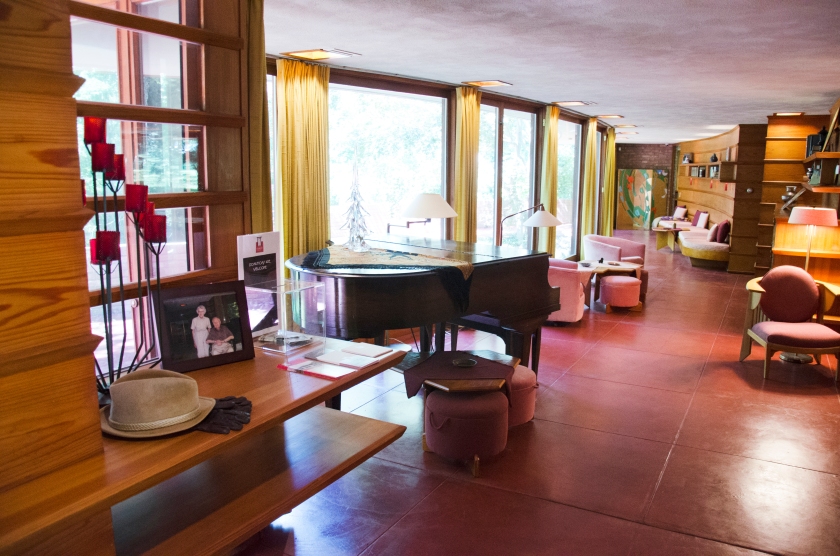

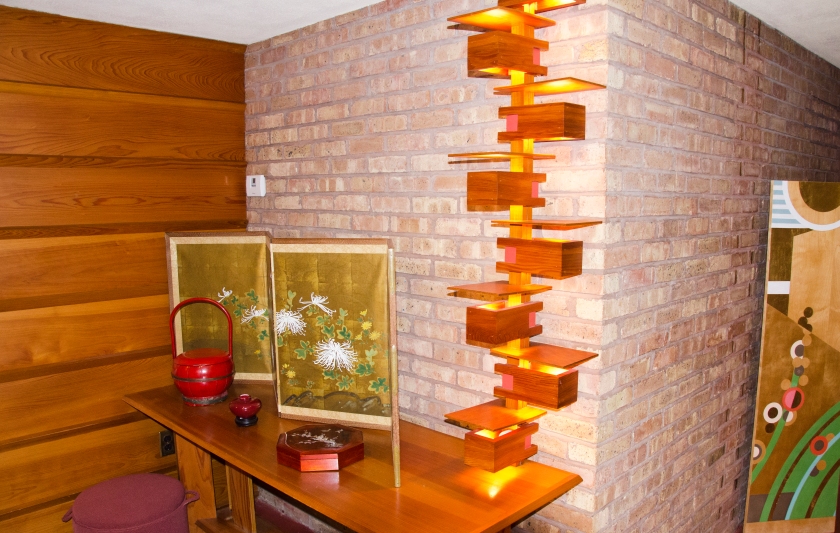
Tours for the season begin in April so be sure to put the Laurent Home on your must-see list this year!
Bonus stop: Pettit Memorial Chapel

Guides at the Laurent House encourage you to also see the Pettit Memorial Chapel in near-by Belvidere. It was designed by Frank Lloyd Wright and built in 1907. The day we were in Rockford it was sunny and pleasant, and we considered it worth the short drive to stop at Belvidere Cemetery and take a look. It’s the only structure Wright designed for a cemetery setting.

Bonus stop: Midway Village Museum

Not far from the Laurent House is the Midway Village Museum which has a campus of 148 acres. In the main building you’ll find a lot of information and exhibits on Rockford’s history. Elsewhere on the grounds is a village of 26 structures and gardens representing a rural community during the era of 1890-1910. It’s all self-guided so you can wonder around as you please.
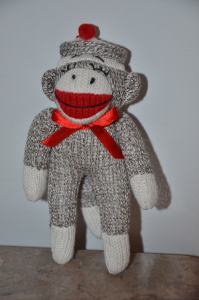
One chapter of Rockford’s history they emphasize is the knitting industry and the famous Rockford Red Heel Socks. Today we’re all familiar with the monkeys that are made from these socks. Exhibits at the museum tell you about the Nelson Knitting Company that created the socks and how the monkeys came about.
And you can take a photo with Soxanne, the giant fiberglass monkey!

